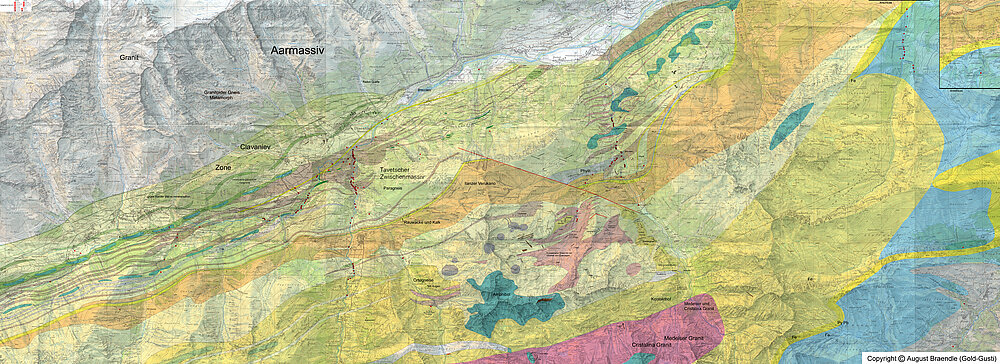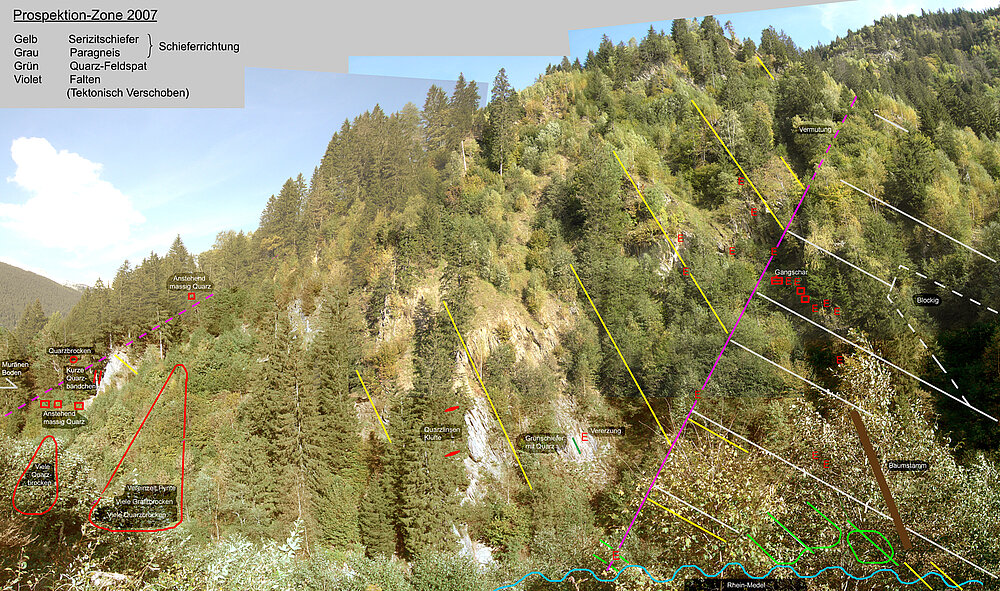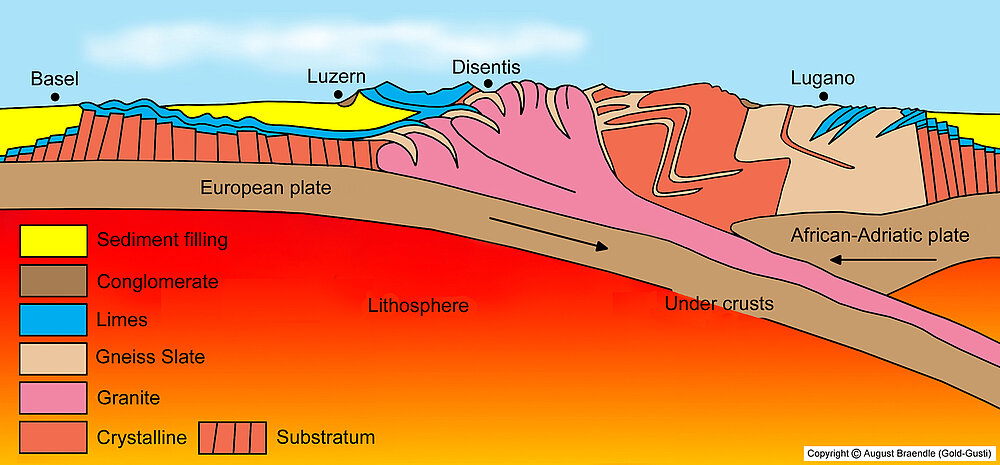
Local geology
Click to enlarge This geological map shows the gold-bearing rivers (shown in red). The original has a scale of 1: 10000. Twelve years ago I drew this map. It will be continuously updated and adapted with further details.
The Tavetsch intermediate massif
This is a geological formation wedged between the Aarmassiv in the north and the Gotthard massif in the south.
Light yellow: Various paragneisses form the main part of the intermediate massif. These are relatively massive rocks with a recognizable slate direction.
Brown: The sericite schist is banded and often has a thickness of only 20 to 40 meters. Sericite is a fine type of mica that lies parallel in the slates.
Green: The greenschist has a pronounced foliation. It contains chlorite, quartz and a little feldspar. The zones are mostly within the sericite slate.
Dark Blue: The amphibole has a complicated crystal chemistry. It is very compact, relatively heavy and mostly greenish in this area.
Dark yellow: Limestone tufa or Rough wacke is a pore-rich rock with many holes. A band only about 20 meters wide extends over the entire map area.
The Gotthard massif
Dark pink: The granite was created by the penetration of a large magma mass into the earth's crust and its subsequent very slow cooling (plutonism).
Medium yellow: The orthogneiss is due to the great heat of the neighboring plutons a strongly changed rock (contact metamorphosis).
Pink: The biotite gneiss belongs to the group of orthogneisses. The rock contains the dark mica type biotite and is interspersed with millimeter-thin quartz layers.
Dark Beige: The Verukano is a sedimentary debris. In many places Phyllit is also associated, a thin-skinned structure with a high proportion of sericite.
Light blue: These are artificial rocks such as conglomerates, sandstones and marls.
The other rocks which can be found include paragneiss, sericite schist, amphibole and the calcareous tuff are already described above under Tavetsch intermediate massif.

A field study
Click to enlarge These photos are taken from the lumber yard at the Lukmanier road and put together. From time to time, I do such field studies to capture many details.


